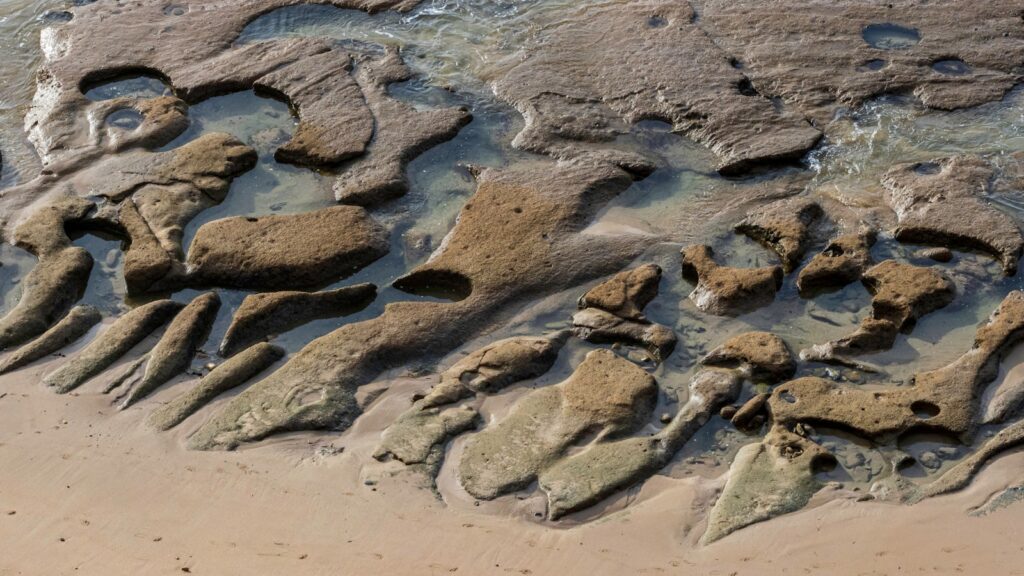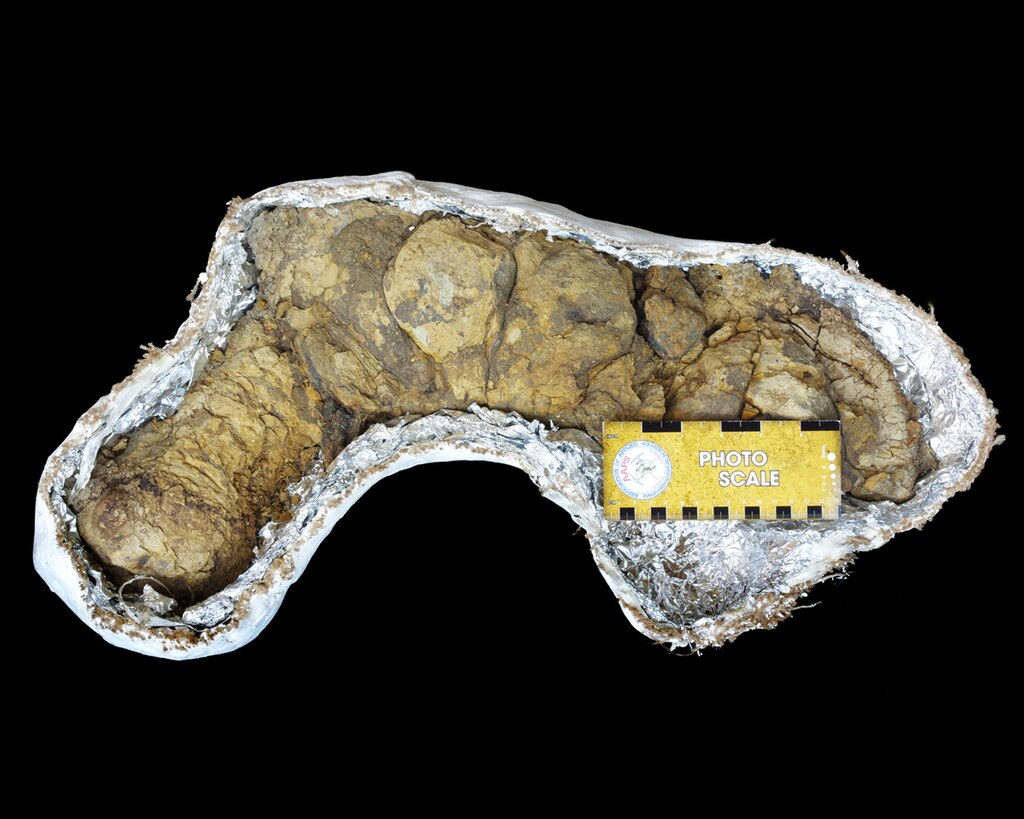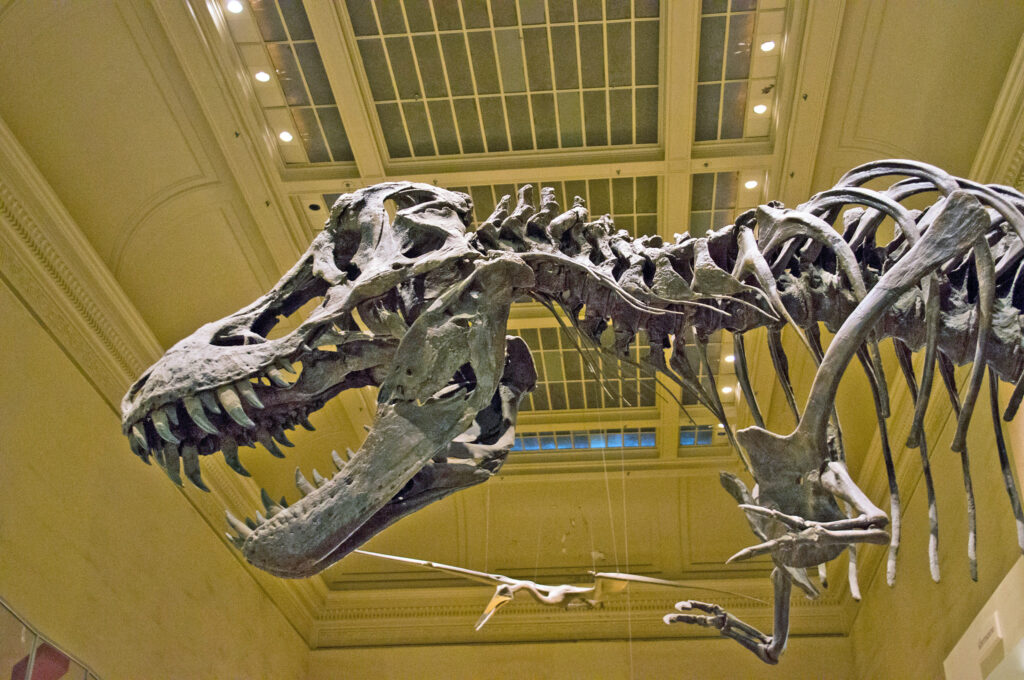Dinosaur tracks near water sources provide paleontologists with invaluable insights into prehistoric life. These fossilized footprints, preserved in ancient mudflats, lakeshores, and river margins, tell stories that bones alone cannot reveal. They capture moments in time when dinosaurs interacted with their environment, particularly around water sources that were essential for survival. By studying these trackways, scientists can determine behavior patterns, social structures, and ecological relationships of these magnificent creatures that roamed our planet millions of years ago. This article explores what we’ve learned from dinosaur tracks found near ancient water sources and how they continue to reshape our understanding of dinosaur biology and behavior.
The Preservation Process of Dinosaur Tracks Near Water
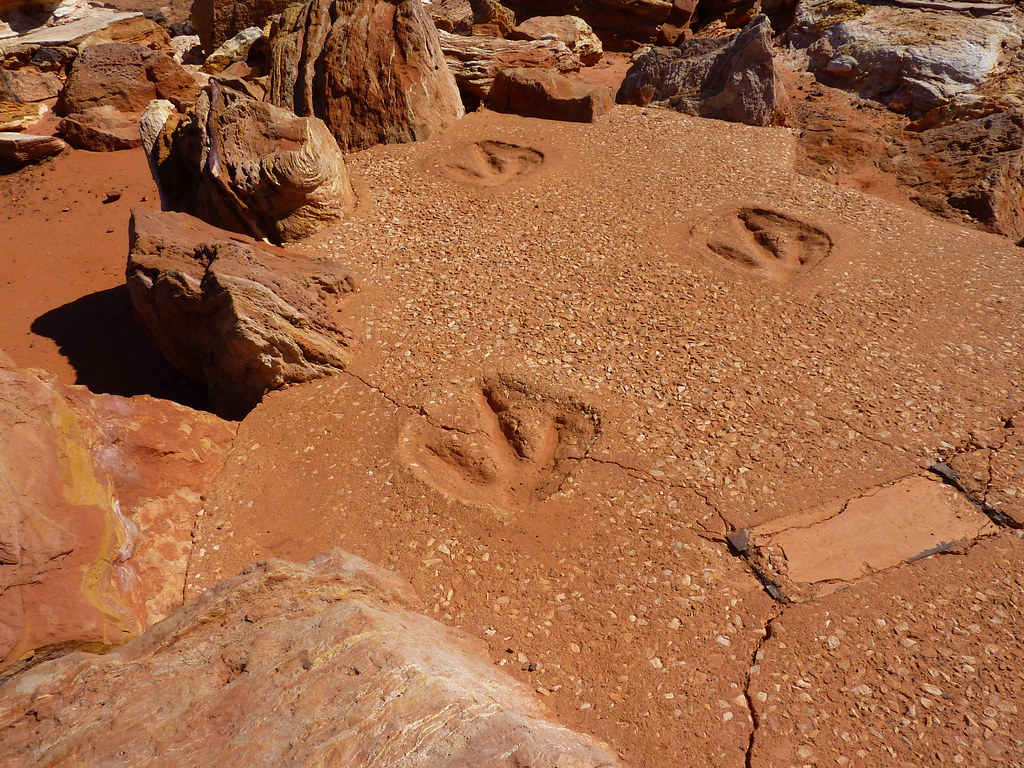
Dinosaur tracks near water sources benefit from ideal preservation conditions that rarely occur in other environments. When dinosaurs walked through soft mud or sand near ancient shorelines, their footprints created depressions that could be quickly covered by sediment carried by water, protecting them from erosion and degradation. This rapid burial process, often facilitated by subsequent flooding or changing water levels, created perfect conditions for preservation. The sediment would eventually harden into rock through lithification, permanently preserving the three-dimensional structure of the footprint. Unlike skeletal remains that may be scattered or damaged by scavengers, tracks preserved near water sources frequently remain in their original context, providing an authentic snapshot of a moment in prehistoric time when the dinosaur was alive and active.
What Tracks Reveal About Dinosaur Behavior
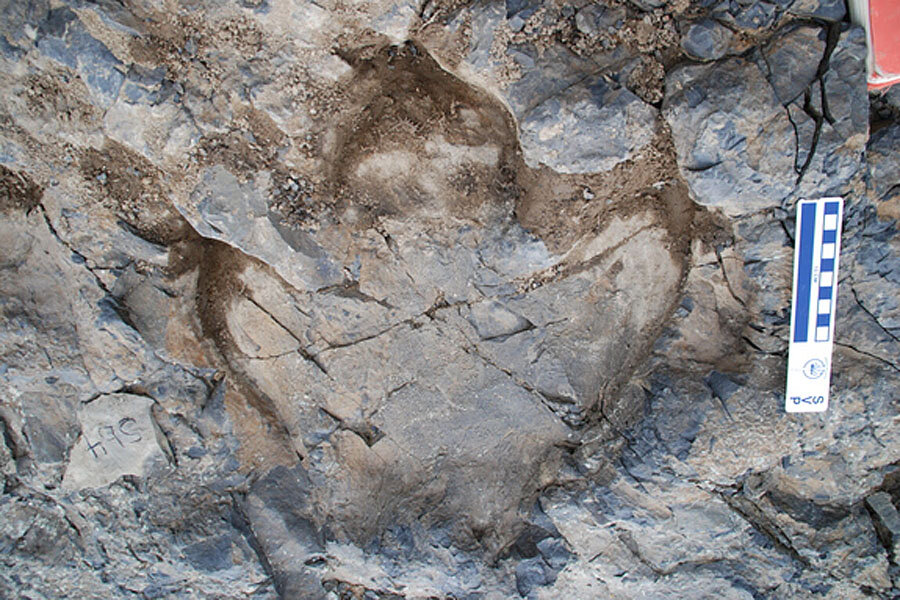
Tracks near water sources offer unique windows into dinosaur behavior that skeletal remains simply cannot provide. Multiple parallel trackways of the same species can demonstrate herd behavior, with adults and juveniles moving together in social groups—as seen in the famous Davenport Ranch trackways in Texas. Predator tracks intersecting with those of herbivores might indicate hunting behavior or opportunistic feeding near water resources. Some trackways show evidence of dinosaurs changing speed or direction, potentially responding to environmental conditions or other animals. Particularly revealing are tracks showing dinosaurs wading into water bodies, demonstrating swimming capabilities or feeding behaviors at the water’s edge. These behavioral insights allow paleontologists to reconstruct complex ecological interactions and life habits that would remain completely unknown if we relied solely on skeletal fossil evidence.
Famous Water-Adjacent Dinosaur Track Sites Worldwide
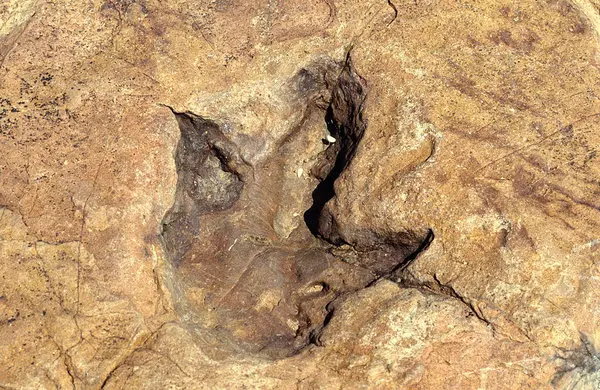
Several significant dinosaur track sites around the world showcase the relationship between dinosaurs and water environments. The Paluxy River site in Texas contains some of the most famous dinosaur trackways, with sauropod and theropod prints preserved in what was once a coastal plain. In Portugal, the Lourinhã Formation features extensive trackways along what was once a lagoon shoreline, showing multiple dinosaur species using the same water resource. The Jindong Formation in South Korea preserves remarkable trackways of dinosaurs moving along ancient lake margins. Perhaps most spectacular are the tracks at Fumanya, Spain, where over 3,500 footprints spread across vertical cliff faces that were once horizontal mudflats, revealing how multiple dinosaur species navigated these watery landscapes. These sites continue to yield new discoveries as scientific methods advance, providing increasingly detailed pictures of dinosaur ecology and behavior.
Distinguishing Dinosaur Species Through Water-Side Tracks
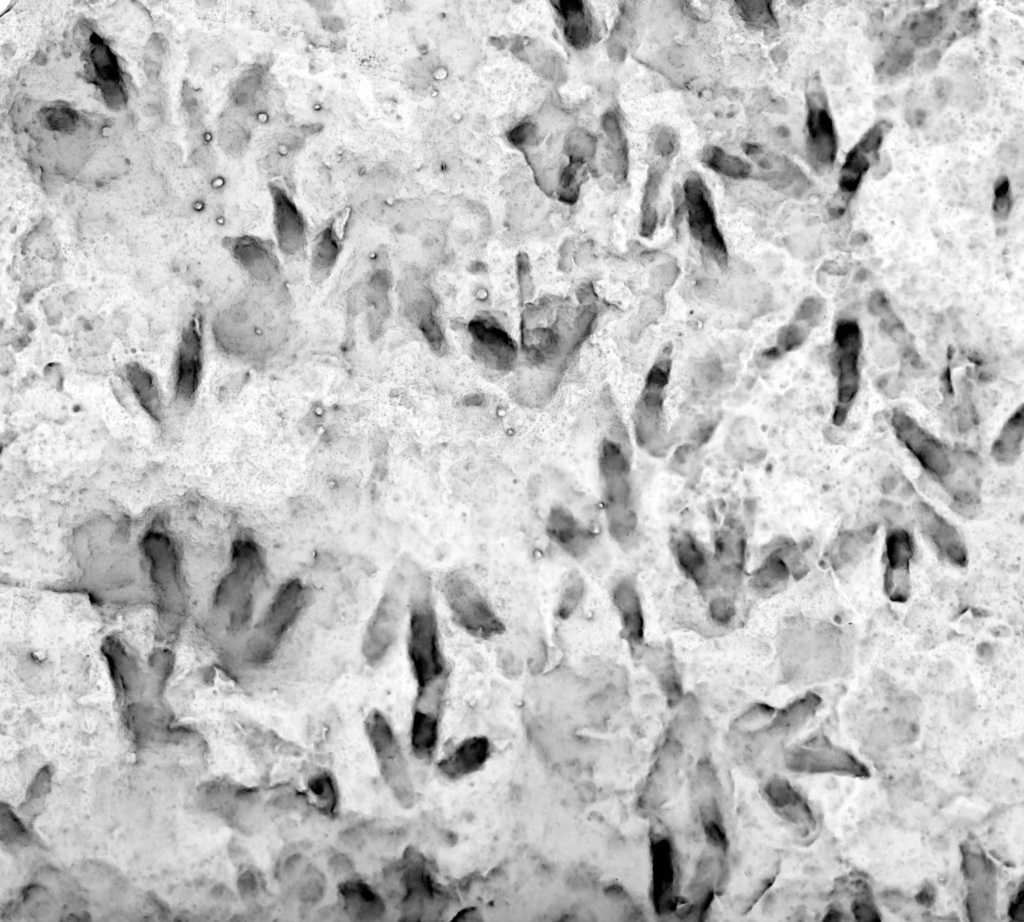
Tracks near water sources allow paleontologists to identify different dinosaur species and their ecological niches within the same habitat. The distinctive three-toed prints of theropods, with their sharp claw marks, contrast sharply with the elephant-like circular prints of sauropods or the broad, three-to-five-toed tracks of ornithopods. These differences reveal how various dinosaur species utilized water resources differently—some perhaps visiting briefly to drink, while others spent considerable time feeding on aquatic vegetation. Interestingly, track size and depth can also indicate the animal’s weight and movement speed, with deeper impressions suggesting heavier dinosaurs or those moving more slowly through soft mud. By analyzing track morphology in relation to known skeletal anatomy, scientists can sometimes identify dinosaur species that have left no body fossils in a particular region, expanding our knowledge of prehistoric biodiversity beyond what bones alone could tell us.
Evidence of Dinosaur Swimming Behaviors

Some of the most fascinating dinosaur tracks near water sources provide evidence that certain dinosaur species were capable swimmers. In northwestern Spain, scientists discovered unusual theropod tracks showing only claw marks, suggesting the animals were swimming with their feet occasionally touching the bottom. Similar evidence comes from the Cameros Basin in Spain, where trackways show dinosaurs entering deeper water, with their footprints gradually becoming shallower and more widely spaced as the animals began to float. In Wyoming’s Bighorn Canyon, researchers found what appear to be swim traces from large theropods moving through deep water. These rare swimming traces fundamentally change our understanding of dinosaur capabilities and behavior, suggesting that some species were comfortable in aquatic environments rather than avoiding water as previously thought. By analyzing the pattern, depth, and orientation of these partial footprints, paleontologists can reconstruct how dinosaurs navigated through water bodies and potentially used them as resources or escape routes.
Seasonal Migration Patterns Revealed by Waterside Tracks
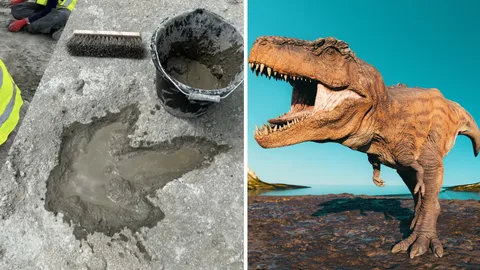
Dinosaur tracks preserved near ancient water sources have provided compelling evidence for seasonal migration patterns among various dinosaur species. Multiple trackway layers at sites like the De Beque Formation in Colorado show repeated use of the same routes by herds of hadrosaurs, suggesting these dinosaurs followed regular migration paths that consistently brought them to reliable water sources. The orientation and directionality of these trackways often align with what would have been seasonal changes in water availability. Particularly telling are sites where tracks appear in rhythmic layers within sedimentary deposits, indicating annual or seasonal returns to the same locations. These migration patterns likely developed in response to changing water availability and food resources throughout the year, demonstrating sophisticated behavioral adaptations similar to those seen in modern migratory animals. By analyzing the stratigraphic context of these trackways, paleontologists can reconstruct not just where dinosaurs walked, but the seasonal timing and regularity of their movements across ancient landscapes.
Predator-Prey Interactions at Ancient Watering Holes
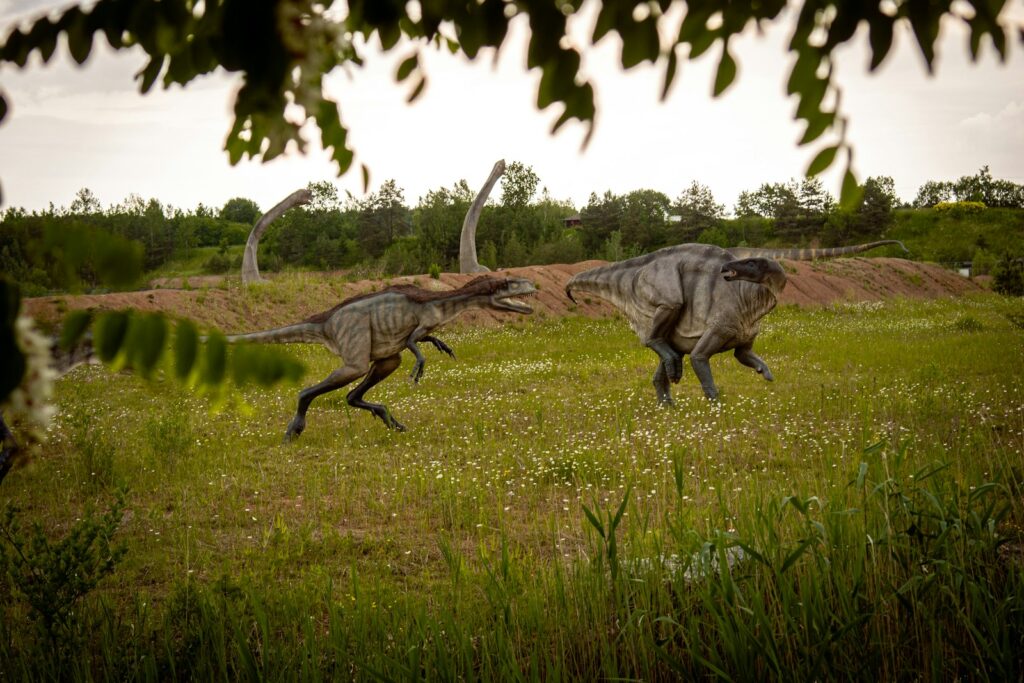
Ancient water sources served as gathering points for diverse dinosaur species, creating natural settings for predator-prey interactions that sometimes became preserved in the fossil record. Several remarkable track sites show evidence of potential hunting behavior, such as at the Paluxy River in Texas, where theropod tracks parallel those of sauropods, suggesting stalking behavior. Even more dramatic are rare instances where tracks show evidence of direct pursuit, with prey species making sudden changes in direction or speed, leaving deeper, more chaotic impressions in the mud. These ancient watering holes likely functioned much like modern African water sources during dry seasons, where predators take advantage of prey animals’ need to drink. The spatial arrangement of tracks can reveal hunting strategies—some predators appeared to approach from downwind or use vegetation for cover, based on the orientation and pattern of their tracks in relation to prey species. These preserved moments of predation provide rare glimpses into the dynamic ecological relationships that shaped dinosaur evolution and behavior.
How Tracks Help Reconstruct Ancient Environments
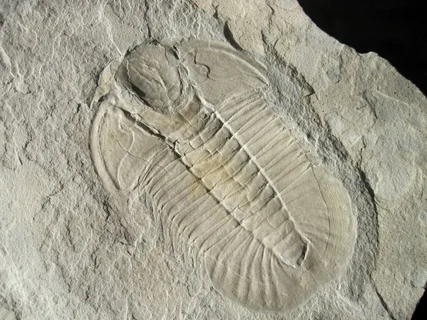
Dinosaur tracks near water sources serve as excellent environmental indicators, helping scientists reconstruct ancient ecosystems with remarkable detail. The sedimentary context of the tracks—whether preserved in mudstone, sandstone, or limestone—reveals the specific environmental conditions at the time the dinosaur walked. Tracks preserved in fine-grained mud typically indicate calm, shallow water environments like lake margins or coastal plains, while those in coarser sediments might suggest riverbanks or deltas with stronger water currents. Associated fossils found alongside tracks, such as plant remains, invertebrates, or other vertebrate traces, further enhance environmental reconstruction by indicating the broader ecological community. In some cases, ripple marks preserved alongside dinosaur tracks show water depth and flow direction, while mud cracks indicate periodic drying of the environment. Together, these features allow paleontologists to paint detailed pictures of ancient waterside landscapes, complete with their vegetation, climate conditions, and the community of animals that inhabited them.
Technological Advances in Studying Water-Adjacent Tracks

Modern technology has revolutionized the study of dinosaur tracks near water sources, revealing details previously invisible to researchers. Photogrammetry and 3D scanning create precise digital models of tracks, allowing scientists to analyze subtle features like skin impressions or pressure patterns that indicate weight distribution and movement. These techniques are particularly valuable for studying tracks near water, where preservation can be exceptional but also fragile. Ground-penetrating radar has enabled the discovery of tracks buried beneath layers of sediment without destructive excavation, revealing extensive trackway systems around ancient water bodies. Sophisticated computer modeling can now simulate how different dinosaur species would have moved through varied terrain, including shallow water, helping validate interpretations of tracks found in these environments. Perhaps most exciting is the use of machine learning algorithms to identify patterns across thousands of track specimens, revealing previously unrecognized relationships between track morphology and dinosaur behavior in waterside environments. These technological advances continue to extract new information from tracks discovered decades ago while guiding the search for new sites.
Social Gathering Evidence at Water Sources
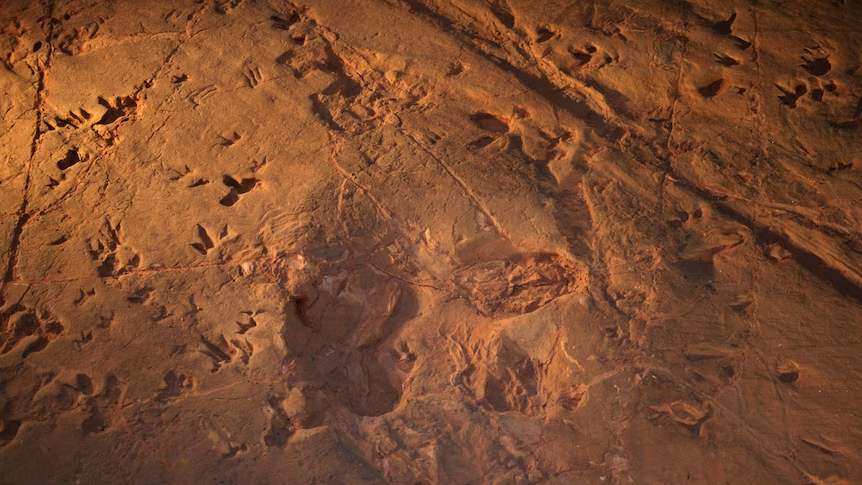
Dinosaur trackways near ancient water sources provide some of the strongest evidence for social behavior among various dinosaur species. Multiple parallel trackways of the same species, all moving in the same direction and preserved at the same time horizon, strongly suggest coordinated group movement rather than individuals randomly visiting the same water source. The famous Lark Quarry site in Australia preserves what appears to be a dinosaur “stampede” near a water source, with hundreds of small dinosaur tracks moving rapidly in the same direction, possibly fleeing a larger predator. Age diversity within these group trackways can be particularly revealing—some sites show distinctive tracks of adults alongside juveniles of varying sizes, suggesting family groups or herds with age-structured social organization. The spacing between individual trackways can indicate social dynamics, with some species maintaining consistent distances between individuals while others show more varied spacing. These social gathering patterns at water sources likely served multiple adaptive functions, from protection against predators to teaching young dinosaurs about resource locations and migration routes.
Dinosaur Feeding Behaviors Revealed at Waterside Locations
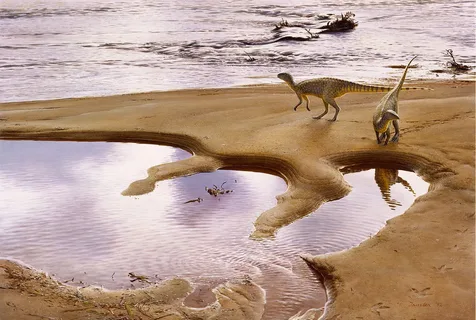
Tracks preserved near water environments often capture evidence of dinosaur feeding behaviors that rarely preserve elsewhere. Some trackways show sauropods or hadrosaurs moving along the edges of ancient lakes or rivers, their patterns suggesting methodical browsing on aquatic or shoreline vegetation. Particularly revealing are tracks showing dinosaurs pivoting or remaining stationary in one location, creating distinctive “dinoturbation” patterns that suggest sustained feeding activity rather than simple passage through an area. In some remarkable cases, tracks have been found associated with preserved plant material showing damage consistent with dinosaur feeding structures, creating a direct link between the animal and its food source. Predatory dinosaur tracks sometimes show evidence of stalking behavior near water, with slow, careful steps followed by deeper impressions suggesting a sudden lunge—possibly at prey animals that had come to drink. These feeding-related tracks provide crucial insights into dinosaur diets and foraging strategies that complement what we can learn from tooth morphology and rare stomach contents, painting a more complete picture of how different dinosaur species sustained themselves.
Challenges in Interpreting Water-Adjacent Dinosaur Tracks

Despite their scientific value, dinosaur tracks near water sources present unique interpretive challenges for paleontologists. Water-saturated sediments can distort footprint shapes, making species identification difficult as the mud flows back into the impression or as the animal’s foot slides during placement. Submerged tracks may appear significantly different from those made on dry land by the same species, as buoyancy affects how much weight the dinosaur places on each foot. Time-averaging poses another challenge, as tracks visible on a single bedding plane today might actually represent events separated by days, years, or even centuries in the original environment. Water levels in ancient environments fluctuated seasonally, meaning tracks that appear to be made at the water’s edge might represent different water conditions than initially assumed. Additionally, preservation bias means we’re more likely to find tracks from environments conducive to preservation (like muddy shores) than from other habitats, potentially skewing our understanding of dinosaur environmental preferences. These interpretive challenges require paleontologists to exercise caution and consider multiple hypotheses when reconstructing dinosaur behavior from water-adjacent tracks.
Future Directions in Waterside Track Research
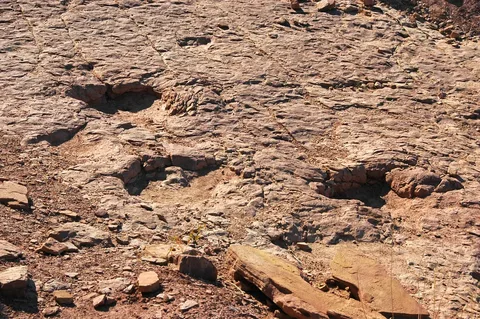
The study of dinosaur tracks near water sources continues to evolve, with several promising research directions emerging. Integrative approaches combining traditional ichnology (the study of traces) with advanced geochemical analyses now allow scientists to determine water chemistry, temperature, and even seasonality at the time tracks were made. Researchers are increasingly focusing on understudied regions like Africa and Antarctica, where new waterside track discoveries could fill crucial gaps in our understanding of dinosaur distribution and behavior across different paleoenvironments. Experimental studies with modern animals are helping refine interpretations of ancient tracks, as researchers observe how large birds and reptiles create footprints in different substrate conditions, particularly in water-saturated environments. The growing field of conservation paleontology is developing better methods to preserve vulnerable track sites threatened by erosion or human activity, especially those along modern shorelines where rising sea levels pose imminent threats. Perhaps most exciting is the emerging synthesis of track data with other fossil evidence and sophisticated ecological modeling, creating increasingly comprehensive pictures of how dinosaurs interacted with ancient water sources and the ecosystems that surrounded them.
Conclusion

Dinosaur tracks near water sources represent some of the most valuable windows into prehistoric life, preserving moments of dinosaur behavior and ecology with remarkable clarity. These fossilized footprints tell stories of migration, predation, socialization, and adaptation to various aquatic environments throughout the Mesozoic Era. As technology advances and more sites are discovered globally, our understanding of how dinosaurs interacted with water sources continues to deepen and evolve. These ancient impressions, left in mud millions of years ago, remind us that despite their extraordinary differences, dinosaurs faced many of the same environmental challenges as modern animals—finding water, food, and safety in their daily lives. Through careful study of these trackways, paleontologists continue to bring dinosaurs to life not just as remarkable anatomical specimens, but as living, breathing animals that once walked the shores of ancient waterways across our planet.

